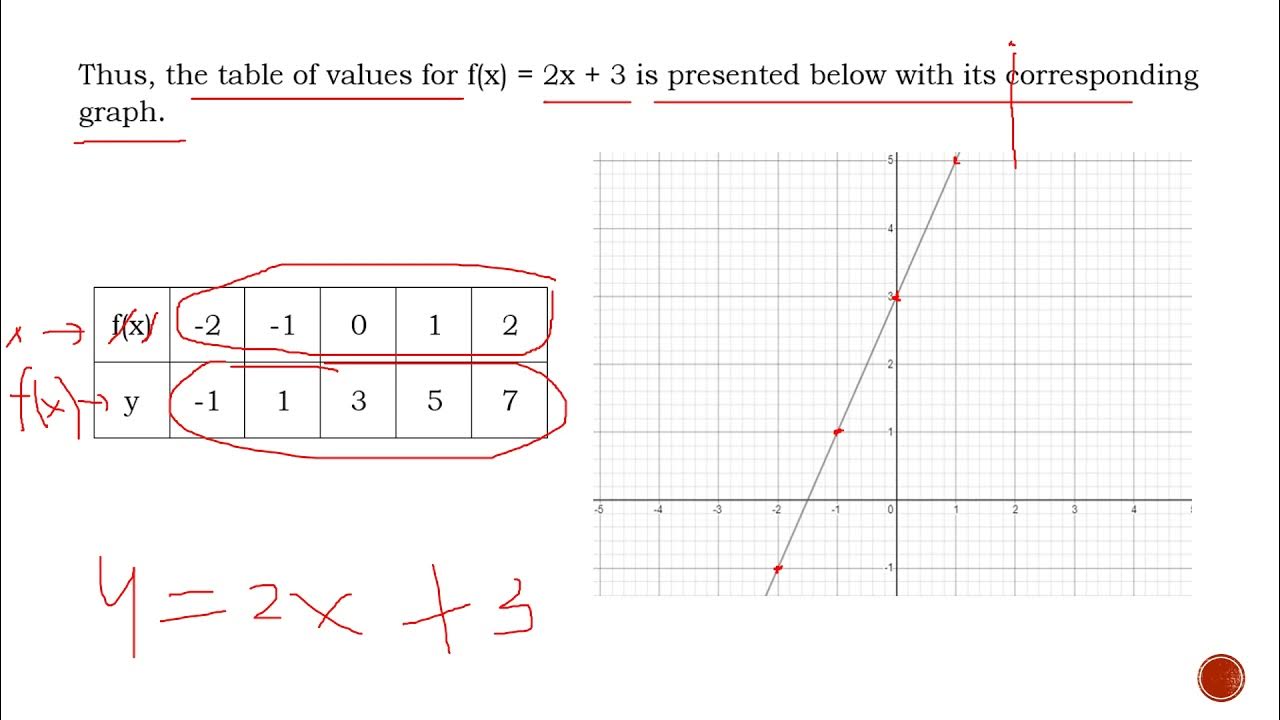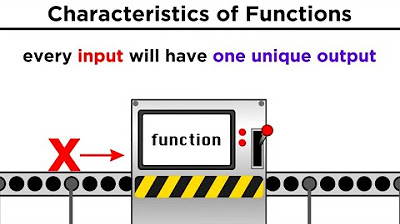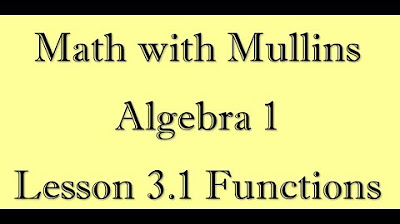Funções: Estudo do Domínio das Funções Reais (Aula 3 de 15)
Summary
TLDRThis video lesson introduces the concept of the domain in real functions, explaining its role and importance in determining valid input values. The instructor covers various types of functions, including linear, rational, and square root functions, highlighting how to identify domain restrictions based on factors like denominators and radicands. Key concepts include determining valid input ranges when dealing with fractions, square roots, and combinations of both. The lesson emphasizes the need to intersect different conditions to find the correct domain and ensures students understand how to apply these rules in practice.
Takeaways
- 😀 Functions consist of three components: the domain (set of starting values), codomain (set of possible results), and the function itself (the law of correspondence between the two sets).
- 😀 In many cases, the domain and codomain are not directly given, and it's necessary to deduce them based on the function's form.
- 😀 For a simple function like f(x) = 2x + 1, the domain is all real numbers because there are no restrictions on the value of x.
- 😀 For functions with a denominator, like f(x) = 1/(x-2), the domain excludes values that would make the denominator zero (in this case, x cannot be 2).
- 😀 In square root functions, like f(x) = √(x - 3), the domain is restricted to values where the expression under the square root is greater than or equal to zero (x ≥ 3 in this case).
- 😀 When both a square root and a denominator are involved, such as f(x) = 1/√(x + 4), the domain is determined by ensuring the expression inside the square root is greater than zero (x > -4).
- 😀 For more complex functions with multiple conditions, like f(x) = √(5 - x) / √(x - 2), the domain must satisfy both the conditions for the numerator and the denominator simultaneously (x ≤ 5 and x > 2).
- 😀 The domain of a function can be expressed either in set notation (e.g., x ∈ ℝ such that x ≠ 2) or as an interval (e.g., (-∞, 2) ∪ (2, ∞)).
- 😀 When dealing with higher-degree polynomials or functions involving radicals with odd indices (like cube roots), the domain is typically all real numbers since the square root of negative numbers is defined for odd indices.
- 😀 In some cases, the function's domain might exclude specific points like x = 0 or x = 1, as seen in functions like f(x) = 1/(x^2 - x), where x cannot equal 0 or 1.
Q & A
What are the three components that always make up a function?
-The three components that always make up a function are: the domain (the set of possible input values), the codomain (the set of possible output values), and the function itself, which defines the correspondence between these two sets.
What is the domain of a function?
-The domain of a function is the set of all possible values for which the function can be defined or can produce an output.
When the domain and codomain are not provided in a question, how should they be assumed?
-If the domain and codomain are not explicitly provided, the codomain can be assumed to be the set of all real numbers, and the domain must be determined based on the function's restrictions or characteristics.
In the example where f(x) = 2x + 1, what is the domain?
-For the function f(x) = 2x + 1, there are no restrictions on the values of x, so the domain is the set of all real numbers.
What restriction is applied to the domain of the function f(x) = 1/(x - 2)?
-For the function f(x) = 1/(x - 2), the denominator cannot be zero, so x cannot equal 2. Therefore, the domain is all real numbers except x = 2.
How do you determine the domain of a function with a square root, like f(x) = √(x - 3)?
-For the function f(x) = √(x - 3), the expression inside the square root must be greater than or equal to zero because square roots of negative numbers do not exist in the real number system. Thus, x must be greater than or equal to 3, making the domain [3, ∞).
What happens to the domain of a function that has both a square root and a denominator, like f(x) = 1/√(x + 4)?
-For the function f(x) = 1/√(x + 4), the expression inside the square root must be greater than zero because square roots of negative numbers do not exist in the real number system, and the denominator cannot be zero. Thus, x + 4 must be greater than zero, or x > -4, making the domain (-4, ∞).
What is the domain of a function with an even index radical in both the numerator and denominator, such as f(x) = √(x + 2) / √(x - 1)?
-For the function f(x) = √(x + 2) / √(x - 1), the expression inside both square roots must be greater than or equal to zero. For the numerator, x + 2 ≥ 0, so x ≥ -2. For the denominator, x - 1 > 0 (since division by zero is undefined), so x > 1. The domain of the function is x > 1.
How do you handle the domain when dealing with a rational function that has both an even index radical and a denominator?
-When dealing with a rational function with an even index radical in both the numerator and denominator, the domain is determined by ensuring the radicand (expression inside the radical) is non-negative for the numerator and strictly positive for the denominator. You must then find the intersection of the domains derived from both conditions.
What is the domain of a function involving an odd index radical, such as f(x) = ∛(x - 3)?
-For functions involving odd index radicals, such as f(x) = ∛(x - 3), there are no restrictions on the domain because the cube root of any real number (positive, negative, or zero) is defined. Therefore, the domain is all real numbers.
Outlines

This section is available to paid users only. Please upgrade to access this part.
Upgrade NowMindmap

This section is available to paid users only. Please upgrade to access this part.
Upgrade NowKeywords

This section is available to paid users only. Please upgrade to access this part.
Upgrade NowHighlights

This section is available to paid users only. Please upgrade to access this part.
Upgrade NowTranscripts

This section is available to paid users only. Please upgrade to access this part.
Upgrade Now5.0 / 5 (0 votes)





